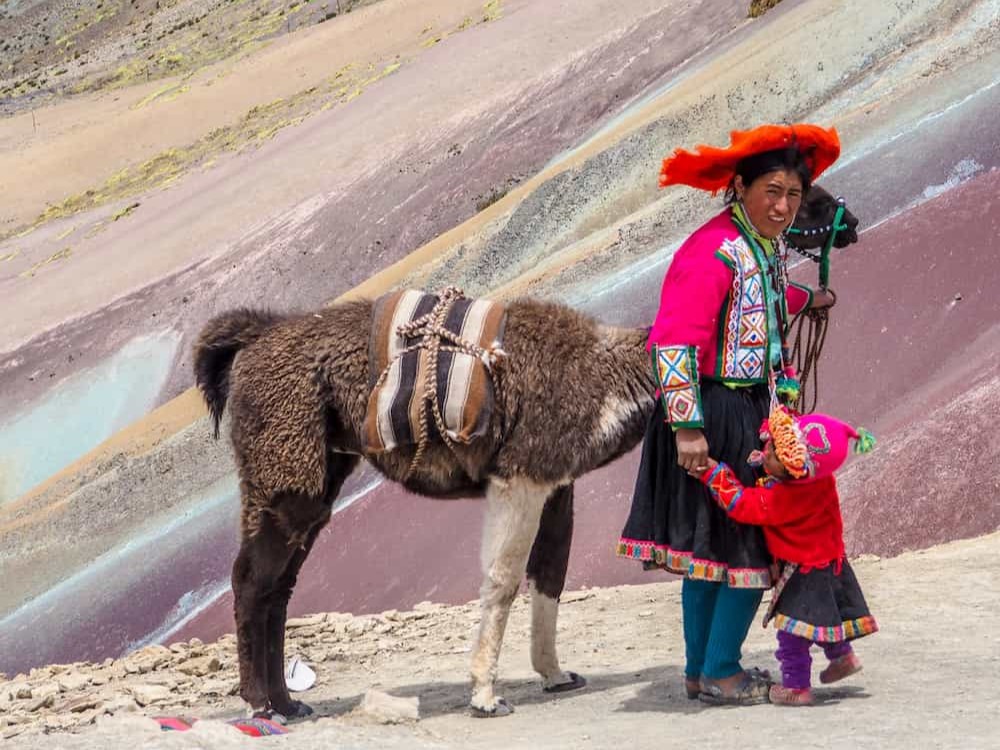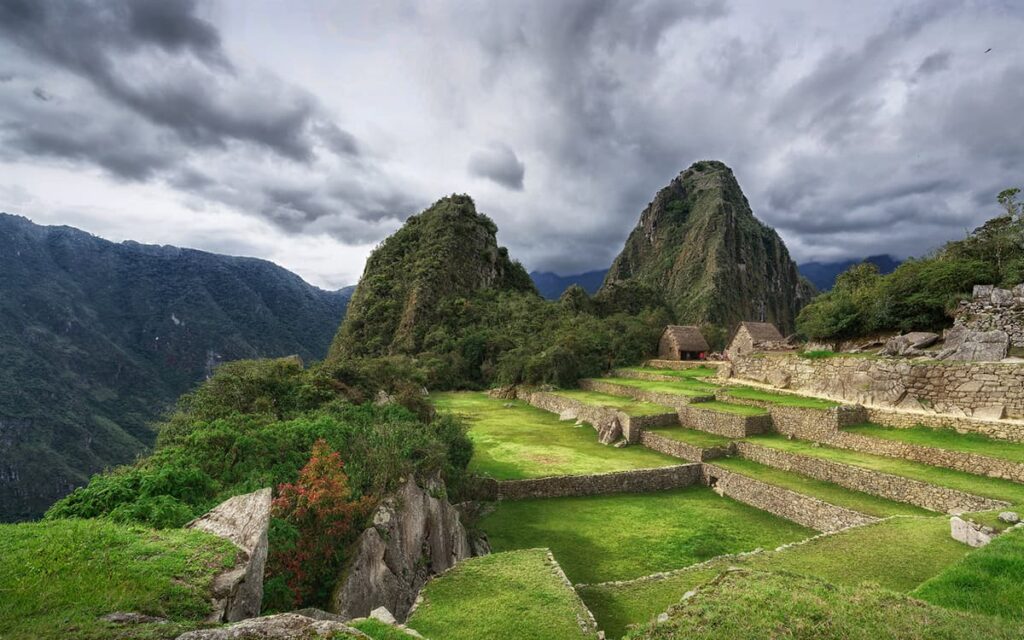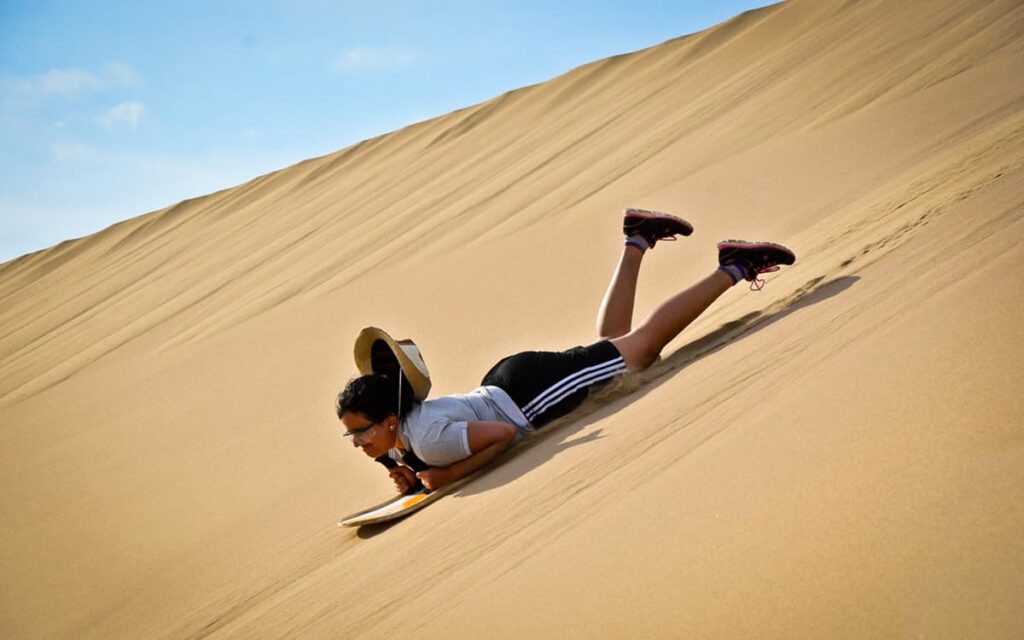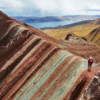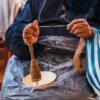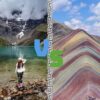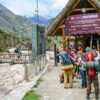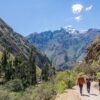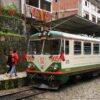Qollqanpata Palace is located near the fortress of Sacsayhuamán. It was built by order of the Inca Manco Capac (founder of the Inca Empire) and its name means «place where there are deposits.» It is considered one of the main buildings of the Inca culture. In this place the Inca and his Panaca harvested for the sun god.
During the conquest, Qollqanpata Palace was ceded to Cristóbal Paullo (an Inca descendant who worked for the Spanish crown). The devotion of this man was so great that he had a church built under the name of San Cristóbal. However, the temple was destroyed by the 1650 earthquake and later an adobe church was built.
Location:
It is located adjacent to Saqsaywaman, in its southern part. These were lands assigned to the Temple of the Sun of Saqsaywaman, It occupies an elevated and strategic part, from where the Huatanay Valley is dominated. Being one of the first palaces, it had to be built in a part where the approach of any individual towards the city of Cusco can be seen.
Description
Qollqanpata was an important neighborhood in the time of the Incas, within it there were many houses but two in particular stand out: the Qollqanpata Palace and the shrine or huaca of «Sapantiana». This palace belonged to and was ordered to be built by Manco Capac, the first Inca. It was the best located within the city of Cusco. Upon the arrival of the Spanish, this place belonged to Diego de Almagro and is currently in the hands of the Church of San Cristóbal.
Its name would come from the derivation of qollqa, which corresponds to a construction intended to store goods and supplies. It seems that its construction was started by Huáscar, the twelfth Inca of Tahuantinsuyo. During the Spanish occupation it became the residence of Manco Inca, although after his uprising and later refuge in Vilcabamba. This was the first palace that was built and only those of royal blood could be in it and where great parties were held.
Who was Manco Cápac?
Manco Cápac or also called Ayar Manco, was founder and first governor of the Incas, according to a Colla legend (legend of Manco Cápac) he was a semi-divine nature hero, being the son of the Sun God (Inti).
Before Manco Cápac arrived in Cusco, the city of Cusco was the seat of pre-Inca tribes. Archeology has shown that the Cuzco area had a long life, before the time of the Incas. Agriculture had a betrayed history in this region, and in the time of Huari there was a great demographic density in Cusco, enough so that an administrative center like Piquillacta could function in its vicinity.
Cusco Foundation
Cusco was founded by Manco Cápac after facing various manors during the 13th century. All the legend about the «Origins of the Incas» are linked to the struggle between various lineages of Cusco for the seizure of power; struggle between lordships whose struggle ended with the triumph of Manco Cápac, Lord of Cusco, a city that since then became the capital of a kingdom that encompassed at least the Vilcanota valley and perhaps that of Urubamba.
General features
- Manco Cápac was a Sinchi, who after the fall of the Tiahuanaco Empire decided to lead the emigration of his people to a fertile and favorable region.
- He was protected by mastery over the arts of war.
- He also had knowledge of agriculture, metallurgy and construction.
- His overwhelming force had the breath of Solidarity in his people.
- He had forged the traditional connection with a distant ancestral trunk, a totem to which they worshiped.
- Without experiencing contrasts, he reached Paruro, and there he settled for some time; more, when approaching the place where he would found Cusco.
- The natural inhabitants of the newly conquered lands resisted him.
- He suffered some defeat and the death of some Sinchis who followed him (as the Quechua legend of the Ayar brothers recalls);
- He defeated those of Quirumanta and Huanacauri, those of Colcabamba and Huaynapata, and, finally, the ayllus guallas, alcabizas and sahuasirais.
- To strengthen his conquest, he began a policy of alliances with the people of the conquered ayllus and taught the defeated the arts of peace.
- He ruled for many years, and died in the middle of the 13th century.
Monuments
The Central Japanese Society (now the Peruvian Japanese Association), which brought together Japanese immigrants, also agreed to donate a commemorative work, deciding that it would be a monument to Manco Cápac, for being an emblem that united Peru and Japan, as it is considered the ancient Inca as «Son of the Sun», a concept also present in Japanese culture.
The monumental work was commissioned to the sculptor David Lozano and in 1922 the work’s commencement ceremony was held, which was located at the intersection of Grau and Santa Teresa avenues, which would later be called Manco Cápac avenue. The work would then be moved to its current location.
A series of setbacks and the breach of contract by the sculptor delayed the work, which was finally inaugurated on April 5, 1926.
A monument that took three years, nine months and 21 days to complete, and that cost approximately 113,500 soles.
Attractions
What can be seen today are the ruins of its walls and part of a carved rock that survived the extirpators of idolatries. The façade of the lower part faces a currently reduced rectangular square, known as the San Cristóbal square.
The building, whose structure was inside the complex, currently only conserves a beautiful Inca wall.
The sculpture behind the wall that remains of the aforementioned building is a lithic representation of a character that expresses carrying something on his back
How to visit the Qollqanpata Palace?
The Qollqanpata Palace is located in the current San Cristóbal Church and is allegedly owned by the first Inka Manko Qhapaq.
This Catholic temple is built near some ruins of Inca origin known as the Ruinas de Ccolcampata, on the hill of Colcampata. It is known that the construction of the temple began, thanks to the initiative of Cristóbal Paullo, who is said to have owned the land occupied by the current temple. Despite the great contribution that this character made, the church had to be rebuilt a century later. It is known that the name that Cristóbal Paullo gave to this church, was given not in his own honor, but to honor his godfather, who was Cristóbal Diego de Castro.
Whoever wants to know this beautiful church in Cusco, has to go to the north of the city of Cusco. The temple of San Cristóbal is half an hour on foot, from the Plaza de Armas in Cusco, and only 10 minutes if you go by taxi. Entrance to the temple is free, but it is only allowed during mass times.
Other Inca Palaces that you should know during your trip to Cusco
The Inca culture worked its buildings using an excellent construction style, which can be seen in the palaces that the Incas erected for their successors. Therefore, it is important that, during your trip to the Imperial City of Cusco, you take time to get to know the four Inca Palaces that we will mention below:
Hatunrumiyoq
The Hatunrumiyoq Palace was built by order of Inca Roca, in this place the leader of the Inca Empire lived with his panaca. The name of the palace means «House that has large stones.» This place preserves a wall built of green diorite stone with irregularly shaped polyhedra: The twelve-angle stone.
Pukamarka
The name of the Pukamarka Palace means «Red Place», it was built by order of the Tupac Inca Yupanqui with the purpose of communicating to the empire that he was its only leader.
Amaru Kancha
The Amaru Kancha Palace was built by order of the Inca Wayna Qhapaq. Its name means «Enclosure of the snakes» and it was inhabited by the Tumipampa Ayllu. It is said that the palace was so wide that it reached down to the Saphy River and the Waqaypata.
Visiting Cusco is a real adventure whose protagonist will be yourself, instead of a memorable experience, that is why Cusco is definitely one of the most incredible cities with a great variety of archaeological centers and tours such as Sacred Valley, Camino Inca or Machu Picchu. To enjoy an unforgettable experience, contact Inka Trail Backpacker, a company that will better assist you during your visit, of course it is always with the necessary advice for you and yours as well as the guarantee, responsibility and security that characterizes us. If you visit the city of Cusco another impressive destinations that you can visit are the tour to rainbow mountain peru or the humantay lake tour from cusco, which only takes one day. But if you are gonna to stay more days in Cusco, other archaeological places you can know will be the choquequirao trek peru, the salkantay trek to machu picchu, and the classic inca trail 4 days 3 nights.

